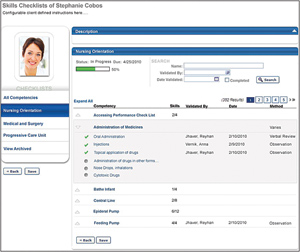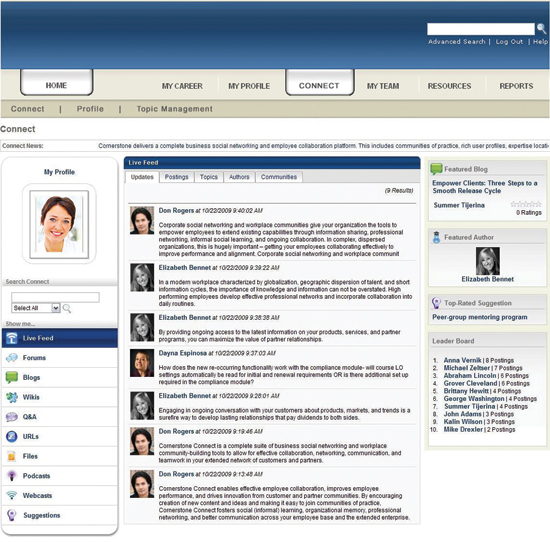Although improved technology in the electric energy industry will pay off with lower costs and higher returns, the people side of the industry is an area ripe for a more strategic approach. People make a company. Increased competition due to deregulation has put on the pressure to hire the best, while at the same time, energy organizations are looking to increase worker productivity and competency. As a result, human resources (HR) operations throughout the industry are fighting to recruit top employees from competing firms – and struggling to retain their best people.
There’s a generational brain drain coming, due to the retirement in the next 10 years of 53 percent of the electric energy industry workforce, who are now 45 years of age or older.1 Training and developing up-and-coming worker – whose average age is 24 to 35 – will become critical for electric energy organizations.
Generation technology also plays a role, as it evolves and changes, creating the need for more complex training and development. It’s already being seen as companies bring new, more efficient facilities online that require more highly complex skills from operators.
These waves of change are creating a significant “talent void” that, when combined with other HR management issues such as globalization and identifying and developing future leaders, may snowball into a huge strategic business issue for electric energy organizations. In order to course correct their talent management strategies in the face of these human capital management issues, HR executives must shift from an administrative to a more strategic function, aligning people management initiatives with the overall goals of the organization.
Integrating Talent Management Processes
Strategic HR starts with a holistic approach to talent management processes which, by definition, help companies attract, develop and retain employees, ensure a pipeline of qualified people, and build a culture of engagement and productivity. Too often, these processes are disconnected across an organization and frequently are incomplete, making it harder for leaders to get a clear picture of their workforce. Their strategic power is realized when they are integrated – and supported by the right technology solution – allowing an organization to more quickly respond to changing business needs and employee demands.
There’s a bottom-line advantage for highly competitive industries such as electric energy companies. According to the analyst firm Bersin & Associates, companies with intermediate to advanced levels of talent management processes performed better financially during the recession, as well as generated higher employee performance and lower overall voluntary turnover.2 With increased pressure to reduce costs as deregulation spurs competition, it makes good business sense for electric energy organizations to take a broader view of the strategic role HR operations can play.
Comprehensive talent management should encompass training and development, employee performance management, and succession planning, all of which can be intertwined using an integrated talent management system.
Raising Performance Levels Via Coaching and Development
Training and development is the best way for any organization to raise the performance levels of its people and achieve better business results. It’s not news that the Bureau of Labor Statistics predicts that because on-the-job training is very intensive in many utilities industry occupations, preparing a new workforce will be one of the industry’s highest priorities during the next decade.
Employee performance management should go beyond simply identifying areas where an employee needs to improve. People need tools to increase their knowledge and improve their skills. This is especially critical for energy organizations, whose business has become more technology-driven, with generating plants that require fewer but more highly skilled workers as more experienced Baby Boomers retire.
Mentoring younger workers and capturing the vast knowledge of the retiring workforce is made easier with technology tools in talent management systems. Managers can also develop high-quality learning plans that improve underperformers, prepare high performers for leadership positions, and address competencies required for specific roles. This “coaching and development” style of performance management can result in increased productivity, higher employee engagement, and improved retention. For HR leaders, this also ensures that learning initiatives are not randomly assigned but actively address identified gaps.
The ability to manage performance can be challenging when it comes to roles where employee performance is best monitored in real time. Some talent management solutions offer a “performance observation checklist” feature, which allows organizations to assess and record an employee’s skills and competencies while directly observing activities in the field. Automating what was once an inefficient, paper-based process makes it easier for organizations to track and validate proficiencies or regulatory compliance with critical safety procedures. When integrated with training and development tools, managers can automatically assign training when additional support is needed. Capturing and tracking this information in a centralized system also helps HR leaders ensure that regulatory reporting is accurate and timely, an invaluable feature for the energy industry as a whole.
Blended learning is the most effective way of delivering consistent, cost-friendly training to global, geographically dispersed workforces. Utilizing the combination of in-classroom training with e-learning, virtual classrooms and mobile learning options allows learning initiatives to be more closely aligned to the needs of busy employees, who now have more options for accessing self-service training – as well as follow up, refresher, or extension materials – anytime, anywhere.
Good planning, engaging content, and a robust, user-friendly learning management system bolster a successful blended learning strategy. Some blended learning programs fail because they don’t take into account the actual learning needs of employees or the organization’s learning culture. Programs need to be developed based on what, how, why, and when employees need to learn. It also requires that employees become more engaged and take more responsibility for their own training and development.
Succession Management 2.0
The third strategic leg is succession management, which can be so much more than just a top-down process that focuses on a few key executives. The right technology and processes can not only expand succession planning deep into the ranks of the organization, but also let a company engage employees directly in career management. Technology can facilitate the collaboration between managers and employees that supports both the needs of the business (bench strength, talent mobility) and the needs of the individual (professional growth, career management, career path).

Career management and career pathing tools are new to the succession discussion. They empower employees to take ownership of their careers, helping to improve engagement and retention. These tools allow employees to create an online profile to market their skills, competencies, and fluency in certain languages, as well as career preferences, such as the willingness to relocate, specific geographical preferences, and long-term career goals. For HR, this provides a searchable database for internal recruiting and introduces a strategic way to connect employees with projects and departments outside of their immediate sphere.
When integrated with learning management, HR leaders can assign targeted leadership courses for employees in the succession pipeline or allow people to identify skill and knowledge gaps based on their career aspirations within the organization and then access courses to close the gap.
Fostering Collaboration and Capturing Knowledge with Social Tools
Some talent management systems can also take advantage of social networking as an emerging powerful business strategy, especially for younger workers who have been practically raised on technology move into the majority at energy companies. Tools like workplace communities, wikis (Web-based knowledge repositories that any employee can contribute to), blogs and rich user profiles should be viewed as information resources that can help organizations increase productivity and drive innovation. It’s not about entertainment – it’s about connecting employees with knowledge and people across an organization, and, most importantly, bridging the generational technology divide by providing a strategic purpose for social networking.

Implementing social media and collaboration tools doesn’t have to be daunting tasks. The easiest and most practical way to introduce these tools is to start small and focus on wrapping social technologies around existing programs, such as training and development. It has been observed that while 80 percent of training budgets are spent on formal learning programs, 80 percent of what people actually learn is informal, whether it is overheard at the water cooler, passed down by a mentor, or shared in an email. Building an online community around an existing training course helps to centralize and capture this informal learning experience. Participants have a means of connecting with one another before, during, and after the course to find commonalities and share knowledge. Employees are better able to connect with their mentors and foster a richer relationship.
Another practical application for social tools is the creation of employee alumni networks. Aging workers leaving the workforce possess large amounts of institutional knowledge that is difficult or impossible to capture and share. Alumni networks provide a social channel to engage retirees so the business can continue to benefit from their expertise even after they are no longer employees, easing the brain drain.
Rich user profiles also can help the company and other employees quickly and easily identify subject matter experts, no matter where they are in the organization. Overall, companies will benefit from the knowledge capture that occurs through this process, allowing them to better manage and collect it in a centralized and searchable system.
Better Workforce Insight
Strategic, comprehensive talent management strategies supported by the right technology solution can provide HR leaders with better and deeper insight into their workforce – the kind necessary to make smarter workforce decisions. Businesses are able to identify high performers and future leaders, track and evaluate employee performance, isolate and address skill gaps with targeted training and development, and ensure that the right people are in the right roles and at the right time – all within a centralized system.
It also can create organizational efficiencies, automating key processes so that HR leaders can spend less time mired in paperwork and tactics and more time developing HR strategies that can support current and future business needs. Even better, valuable workforce data collected in the system can now be tracked and shared.
Making the transition to a holistic workforce management strategy may seem time-consuming and expensive. The best approach is to phase in initiatives for training and development, performance management, succession planning, and enterprise social networking. Consider that field-based employees may not have a culture of remote or self-service learning and performance management, which will require change management initiatives to persuade those employees to access and use these tools.
Energy companies with responsibilities to public and private stakeholders should choose a technology solution that is flexible, scalable, and configurable enough to support business needs, that can be implemented quickly and easily, and that won’t require added IT resources or constant version upgrades. But a technology solution is only as good as the strategy it supports. HR leaders must ensure that talent processes are in line with business needs and that they make sense for the company as a whole.
About the Author

Charles Coy is director of product strategy and a corporate social networking expert for Cornerstone OnDemand, a learning, performance, and talent management software provider.
1 Bureau of Labor Statistics, (http://www.bls.gov/oco/cg/cgs018.htm#outlook)
2 Levensaler, Leighanne; and Laurano, Madeline. Talent Management Systems 2010, Bersin & Associates. September 2009.







